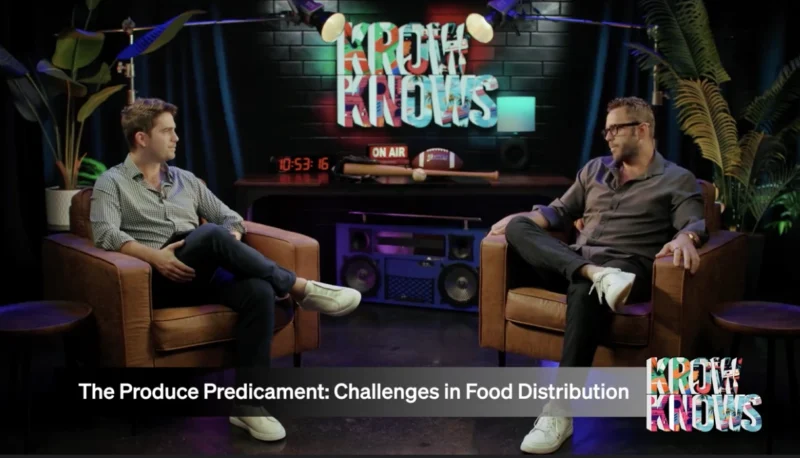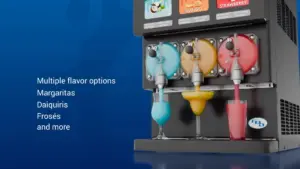IPA Day: Hops Will Lead The Way
The upcoming MarketScale ‘American Craft’ series is showcasing some of the nation’s top craft breweries to discover how they disrupted a market long dominated by international conglomerates. Our first episodes will explore the history of Steam Beer (also known as California Common), how the IPA craze got kicked off with the creation of Cascade hops (and how they were almost destroyed before being saved by microbreweries), and how the trend of bottles to cans got started.
Anchor Brewing Liberty Pale Ale
In the late 1960s, Anchor Brewing was resurrected by Fritz Maytag, who purchased the brewery on a whim in order to keep drinking his favorite beer. Anchor had become known to be inconsistent in taste, and Maytag very famously took a microscope to study the beer on a chemical level to determine the root of the issue. This attention to detail not only saved the brand but led to its growth as one of America’s most successful craft breweries.
As the mid-1970s approached, the United States was eagerly anticipating its Bicentennial. To celebrate the occasion, Maytag released Liberty Ale, Anchor’s first India Pale Ale (IPA).
#TuesdayBrewsday: which Anchor brew are you reaching for today? #RaiseYourAnchor pic.twitter.com/bug1CJ2zIm
— Anchor Brewing (@AnchorBrewing) July 31, 2018
On April 18, 1975, Liberty Ale was born, inspired by the lost English technique of dry hopping that resulted in the making of India Pale Ales.
“Brewers discovered that shoving an additional dose of hops into the cask after the initial brewing phase would preserve beer for a long journey,” Anchor’s current brewmaster Scott Ungermann said.
Brewers have brought this method back because of the ability to add hops into the aroma without negatively affecting the taste.
Maytag’s goal to “brew an English beer and bring it to America but brew it in a distinctly American style” revealed a new flavor complexion to the American public. It has significantly grown in popularity since.
Liberty’s use of Cascade hops was also significant because it was not introduced to the nation until 1971. These hops are distinctive because they produce a floral and slightly bitter beer, a stark contrast from lager beers of the day.
In fact, this hop was so different from what major beer producers targeted in their recipes at the time that many sought to destroy the hop altogether. Craft brewers had different ambitions though.
“Once home brewers got a hold of Liberty Ale and tasted how hoppy it was, they started to create their own hoppy Pale Ales and started playing around with what was possible,” Ungermann said.
Liberty ale and Cascade hops will always be linked together not only because of the beer’s recipe, but because of the IPA and craft boom they spawned more than 40 years ago.
International IPA Day? We'll definitely drink to that. pic.twitter.com/jweG5hPXSZ
— Anchor Brewing (@AnchorBrewing) August 2, 2018
Sierra Nevada Pale Ale
In an industry that is tens of thousands of years old, it is hard to be a pioneer. Still, Ken Grossman was ahead of his time. The founder of Sierra Nevada Brewing Co. started creating his own home brew in the 1960’s, generations before the craft beer boom of the 21st century. Grossman has grown Sierra Nevada into one of America’s most successful breweries and has kept his craft independent since its creation.
Tuesday, that’s a wrap.#tuesdaysgone #PaleAle #wrapitup #HumpDayHappiness pic.twitter.com/0YxQeHHJPP
— Sierra Nevada Beer (@SierraNevada) July 25, 2018
The Chico, Calif. based company is most famous for its pale ale but produces four styles of IPA today. With the addition of a North Carolina brewing facility in 2014, Sierra Nevada is now distributed to, and has distribution centers located in all 50 states.
Dogfish Head
Dogfish Head Brewing Co. made it to the mainstream in 2001 with the introduction the 90 Minute IPA. Dogfish Head produces several similarly themed beers, including the aptly named 60 Minute, 75 Minute, 120 Minute which denotes how often the brewers are adding hops to the wort during the brewing process.
Hooray, it’s #IPAday! Not only are we celebrating by sipping on a few of our favorite India Pale Ales, our merch team is getting in on the fun by offering 40% off all Dogfish Head glassware! 😲 Pop over to https://t.co/EMyeaxmkcJ & stock up…this deal is one day only! #craftbeer pic.twitter.com/TvbAwcNw59
— Dogfish Head Brewery (@dogfishbeer) August 2, 2018
Traditionally, hops are added at the beginning of the boiling period and possibly at the end as well if it is dry hopped. Dogfish Head’s insistence on continuously adding hops to its wort set it apart from other brewers and has led to its rise as one of the nation’s preeminent producers.
Consistently hopping its beer is a meticulous process, and Dogfish made quick work of automating the process. In 2003, the brewery invented a method to automatically add in hops and other flavor enhancers throughout the brew process and jokingly called their invention, “Randall the Enamel Animal”. This ingenuity has made Dogfish a beacon in innovation among craft brewers and has continued in their new distillery operation.
On MarketScale’s American Craft podcast, take a step into Anchor Brewing’s fermentation room and learn how a company twice on its deathbed has become among the largest and most profitable craft breweries in the world.
For the latest news, videos, and podcasts in the Food & Beverage Industry, be sure to subscribe to our industry publication.
Follow us on social media for the latest updates in B2B!
Twitter – @FoodMKSL
Facebook – facebook.com/marketscale
LinkedIn – linkedin.com/company/marketscale








